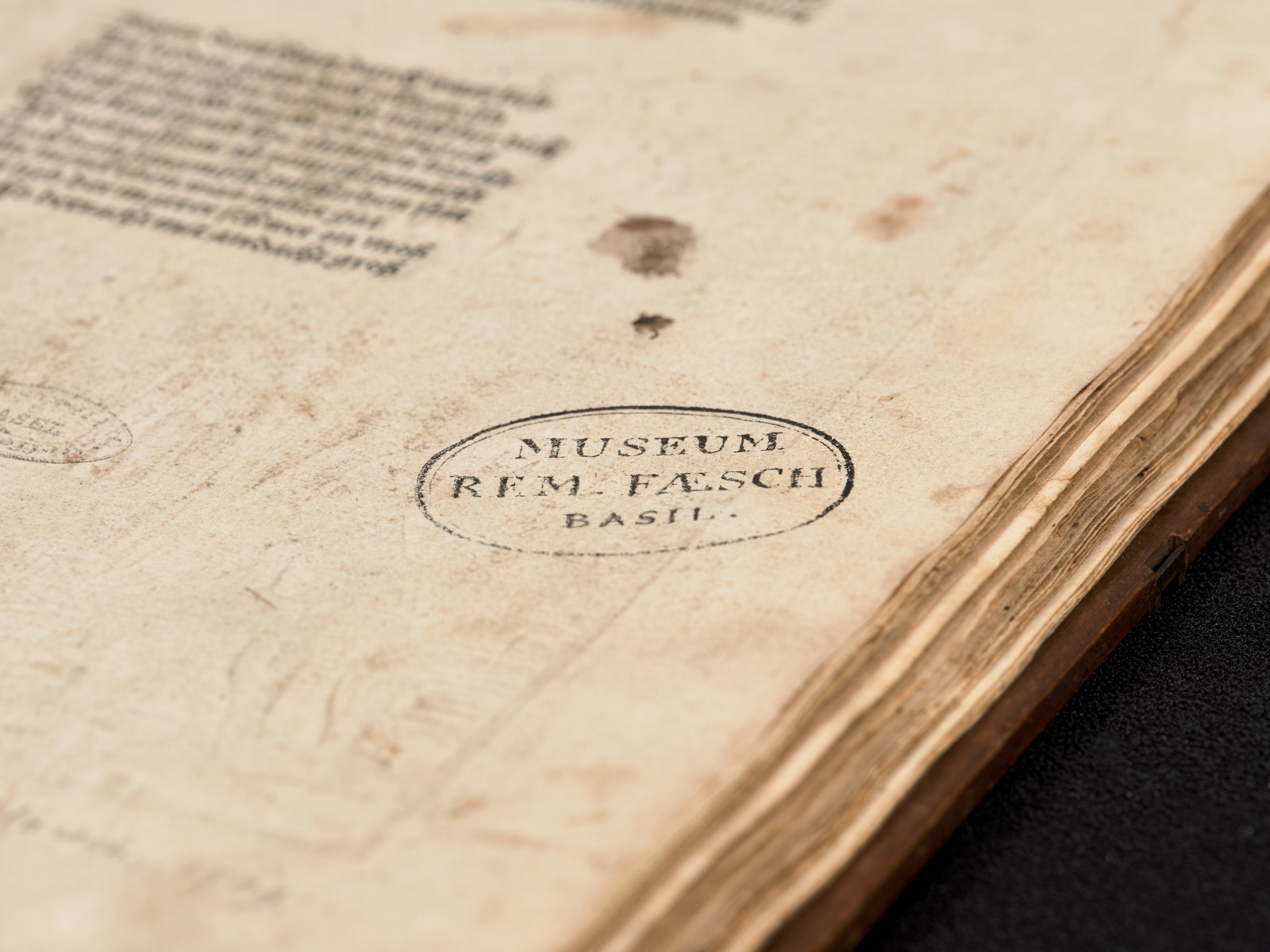Collecting through the Ages
The Museum Faesch at the Kupferstichkabinett
In celebration of the bicentenary of the Museum Faesch at the Kunstmuseum Basel, the Kupferstichkabinett (Department of Prints and Drawings) presents Collecting through the Ages. The exhibition showcases selected exhibits to provide exemplary insight into the museum’s stewardship of a collection of old art and how it ties in with very contemporary concerns.
In 1823, the entire collection assembled by the Basel legal scholar Remigius Faesch (1595–1667) entered into the possession of the University of Basel under the name Museum Faesch. Depending on their kind, the works were distributed to the university’s library and across the municipal museums. Thousands of works on paper—woodcuts, engravings, drawings, and books—went to the Kunstmuseum Basel’s Kupferstichkabinett.
Collecting through the Ages now takes an exclusive look at a segment of the Museum Faesch that is rarely on public display. The exhibition sheds light on the provenance of selected works, their histories and sometimes tortuous journeys: Which of the five exhibits is actually by Albrecht Dürer? Which works went under the Holbein label, and why can they no longer wear it?
No more than a fraction of the holdings of the Museum Faesch has been studied by scholars at the Kupferstichkabinett, in no small part due to the collection’s sheer size. Another particular challenge is posed by the need to identify concrete works. Many of the drawings and prints were stored in portfolios or books, without individual entries in an inventory. And the works were in lively circulation at the time: they were traded in for others and sold to third parties or removed from their original contexts in the collection and assembled in new ways. We have now set out to reconstruct these tangled trajectories.
The anniversary exhibition invites visitors to take a glimpse behind the scenes: they learn about the work of art historians and explore the world of collectors’ labels and stamps, of inventories, tattered paste-books, and other archival materials. These artefacts tell stories of genuine masterworks—and of spurious ones.
In showing how the focus of scholarship has shifted over time, Collecting through the Ages also illustrates how our engagement with art has changed—and less prominent artists suddenly turn out to make for much more exciting objects of study than the well-known works of famous masters.

